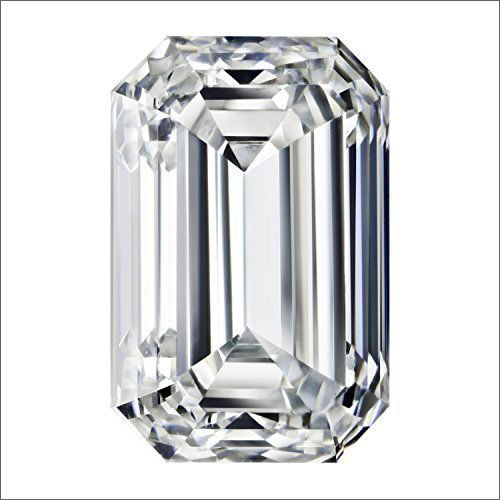
Lab Grown Diamonds
70000 INR/Piece
Product Details:
- Place of Origin India
- Hardness Rigid
- Product Type Natural Diamond
- Diamond Cut Ideal
- Purity High
- Click to view more
X
Lab Grown Diamonds Price and Quantit
- 70000 INR/Piece
- 50 Piece
Lab Grown Diamonds Specification
- Rigid
- High
- Natural Diamond
- Ideal
- India
Lab Grown Diamonds Trade Information
- Cash Advance (CA)
- 1000 Piece Per Month
- 10 Days
- All India
Product Description
Lab-grown diamonds, also known as synthetic diamonds or cultured diamonds, are created through technological processes that simulate the conditions under which natural diamonds form in the Earth's mantle. These diamonds have the same physical, chemical, and optical properties as natural diamonds, making them virtually indistinguishable.
Here are some key points about lab-grown diamonds:
1. Formation Process:
- High Pressure, High Temperature (HPHT): This method mimics the natural diamond formation process by subjecting carbon atoms to high pressure and high temperature.
- Chemical Vapor Deposition (CVD): In this method, a gas mixture is used to deposit carbon atoms onto a substrate, creating diamond crystals layer by layer.
2. Quality and Purity:
- Lab-grown diamonds can be produced with fewer impurities compared to some natural diamonds, as the production process is controlled in a laboratory environment.
3. Ethical and Environmental Considerations:
- Lab-grown diamonds are often considered more ethical and environmentally friendly than mined diamonds. The production of lab-grown diamonds generally has a lower environmental impact and avoids the ethical concerns related to the diamond mining industry.
4. Cost:
- Historically, lab-grown diamonds were less expensive than their natural counterparts. However, as technology advances and demand grows, prices may change.
5. Market Acceptance:
- Lab-grown diamonds have gained acceptance in the jewelry market. Some consumers appreciate the ethical and environmental aspects, while others are attracted to the idea of a high-quality diamond at a potentially lower cost.
6. Identification:
- Advanced testing equipment is required to distinguish lab-grown diamonds from natural diamonds. However, gemological laboratories and trained gemologists can identify the origin of a diamond.
7. Industry Regulation:
- The Federal Trade Commission (FTC) in the United States has guidelines for the diamond industry that include the term "diamond" for lab-grown diamonds. However, it is recommended to disclose whether a diamond is natural or lab-grown to consumers.
8. Applications Beyond Jewelry:
- Lab-grown diamonds are not only used in jewelry but also in various industrial applications, such as cutting tools, electronics, and scientific research.
9. Ongoing Technological Advances:
- Research and development in the field of diamond synthesis continue, leading to improvements in production techniques, quality, and size capabilities for lab-grown diamonds.
Frequently Asked Questions (FAQs):
1. What are lab-grown diamonds?
Ans: Lab-grown diamonds are diamonds created in a laboratory using advanced technological processes that replicate the conditions under which natural diamonds form in the Earth's mantle. They have the same physical, chemical, and optical properties as natural diamonds.
2. How are lab-grown diamonds made?
Ans: Lab-grown diamonds are typically produced using two main methods: High Pressure, High Temperature (HPHT) and Chemical Vapor Deposition (CVD). HPHT mimics the natural diamond formation process, while CVD involves depositing carbon atoms onto a substrate to form diamond crystals layer by layer.
3. Are lab-grown diamonds real diamonds?
Ans: Yes, lab-grown diamonds are real diamonds. They have the same chemical composition (carbon atoms arranged in a crystal lattice structure) as natural diamonds.
4. How can you tell if a diamond is lab-grown or natural?
Ans: Advanced testing equipment, such as spectroscopy and advanced microscopes, is needed to distinguish between lab-grown and natural diamonds. Gemological laboratories and trained gemologists can identify the origin of a diamond.
5. Are lab-grown diamonds cheaper than natural diamonds?
Ans: Lab-grown diamonds have traditionally been less expensive than natural diamonds. However, as technology advances and demand increases, prices may change.
6. Are lab-grown diamonds of lower quality than natural diamonds?
Ans: Lab-grown diamonds can be of comparable quality to natural diamonds, and in some cases, they may have fewer impurities. The quality of a diamond, whether natural or lab-grown, depends on factors such as cut, color, clarity, and carat weight.
7. Are lab-grown diamonds ethical and environmentally friendly?
Ans: Lab-grown diamonds are often considered more ethical and environmentally friendly than mined diamonds. The production of lab-grown diamonds generally has a lower environmental impact, and they avoid the ethical concerns associated with diamond mining.
8. Do lab-grown diamonds come with certificates?
Ans: Yes, reputable lab-grown diamond producers and jewelers often provide certificates that specify whether a diamond is natural or lab-grown. These certificates may include details about the diamond's quality characteristics.
9. Are lab-grown diamonds used only in jewelry?
Ans: No, lab-grown diamonds have various industrial applications beyond jewelry. They are used in cutting tools, electronics, and scientific research.
10. Are lab-grown diamonds regulated?
Ans: The Federal Trade Commission (FTC) in the United States has guidelines for the diamond industry, and these guidelines include the use of the term "diamond" for lab-grown diamonds. However, it is recommended to disclose whether a diamond is natural or lab-grown to consumers.
Get in touch with us






